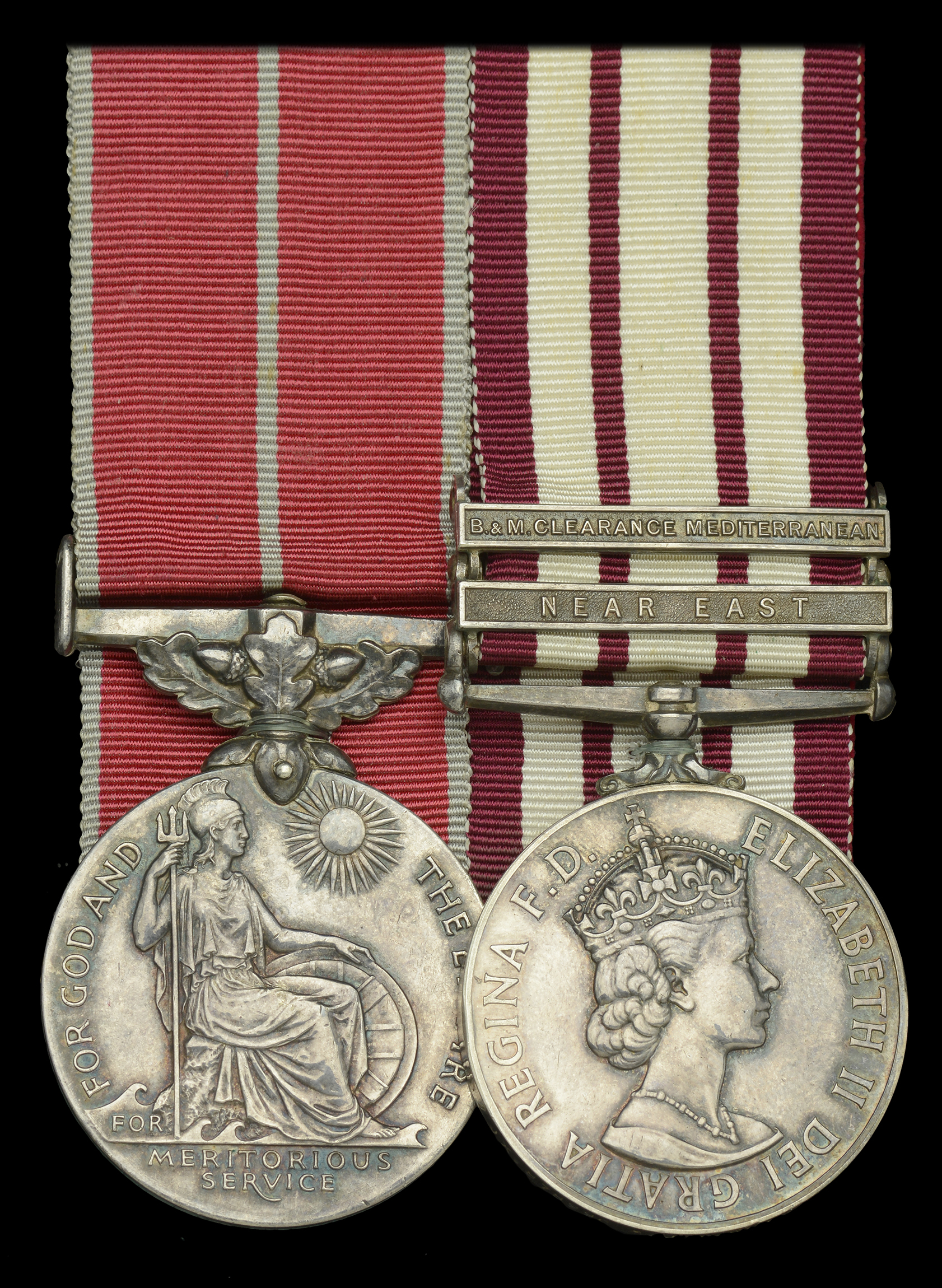The rare post-war bomb and mine clearance B.E.M. pair awarded to Leading Seaman (Diver) A. J. B. Whitton, Royal Navy British Empire Medal (Military) E.II.R. (L.S. Arnold J. B. Whitton, D/JX.878990); Naval General Service 1915-62, 2 clasps, B. & M. Clearance, Mediterranean, Near East (D/JX.878990 A. J. B. Whitton, L.Smn. R.N.) mounted as worn, toned, nearly extremely fine (2) £2,400-£2,800 --- Importation Duty This lot is subject to importation duty of 5% on the hammer price unless exported outside the UK --- --- Provenance: Alan Hall Collection, June 2000. Approximately 65 Naval General Service Medals, or clasps, were issued for six months’ consecutive work in bomb and mine disposal duties in the Mediterranean in the qualifying period 1953-60; British Battles & Medals, refers. B.E.M. London Gazette 12 June 1958. Seedies roll confirms award for services at H.M.S. Phoenicia, shore base on Manoel Island, Malta. Arthur James Burden Whitton served with the Fleet Clearance Diving Team as a diver in the Mediterranean in 1956-57, when the team was involved in clearing old UXBs and mines from Valetta harbour, Malta, and ports in North Africa. Although his B.E.M. was announced in the Queen’s Birthday Honours in June 1958, it was clearly an award for these clearance operations. In that respect, the following letter from Admiral Sir Charles E. Lambe, G.C.B., C.V.O., C.-in-C. Mediterranean, dated 17 January 1958, is not without interest: ‘Mediterranean Fleet Clearance Diving Team I wish to draw the attention of the Fleet to the work carried out during the past year by the Mediterranean Fleet Clearance Diving Team, which has involved some 50 separate operations to render safe, often underwater, and dispose of, over 900 missiles of various kinds. These have included the disposal of a live magnetic-acoustic mine containing 1,536 lbs. of high explosive, and a bomb containing 2,120 lbs. of high explosive. 18 bombs have been found to contain a particularly sensitive trembler type anti-disturbance fuze. 2. The operation concerning the mine mentioned above was probably the highlight of the year’s endeavours. The mine, a German type C, which was found lodged against a jetty in Benghazi harbour, was rendered safe after 2 1/2 hours’ work underwater and subsequently lifted and ditched in deep water. Examination of parts removed from this mine showed that, despite 16 years’ immersion, it was still in working and lethal condition. Expressions of gratitude for this operation have been received from consular and local government authorities in Benghazi. 3. Throughout all the operations undertaken by the Team there has run a spirit of cheerful endeavour, which, combined with courage, skill and careful planning, has enabled its officers and men to maintain the very high standard of efficiency which we have come to expect of the Fleet Clearance Diving Team. Their work has been in keeping with the highest traditions of the Service.’ Sold with the recipient’s original Admiralty named letter of notification for the award of his B.E.M., cut-down and sealed in protective covering, together with some bullion uniform insignia, including 3 ‘Diver’ trade badges, and copied group photograph of the Fleet Clearance Diving Team, including Whitton.





